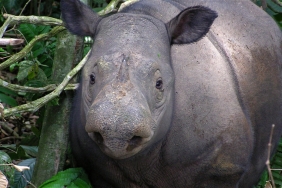THE NUMBER OF TIGERS IN THE WORLD IS NOT KNOWN FOR CERTAIN
Jakarta- In conjunction with Global Tiger Day on July 29, WWF is calling on a number of countries, including Indonesia, to conduct systematic surveys or data collection on tiger populations. The lack of accurate information on tiger populations in the wild could put the animals at risk of extinction in some countries.
In 2010 during the 'Tiger Summit' in St. Petersburg, Russia, the world's tiger species countries estimated the natural tiger population to be less than 3,200 individuals. These countries committed to achieving the TX2 goal - to double the tiger population in the wild by 2022.
"This number is still an estimate," said Michael Baltzer, Leader of the WWF Tigers Alive Initiative. "In 2010, many countries were not systematically monitoring tiger populations. Now, countries are doing so, but not all of them, leaving a worryingly large gap in our knowledge. Until we know how many Tigers we have and where they are, we can't know how best to protect them," Baltzer continued.
Poaching is the biggest threat to tigers in the wild today. Along with Elephant ivory and Rhino horn, the demand for tiger parts in Asia is extremely high. Statistics released by TRAFFIC - a wildlife trade monitoring network - show that at least 1,590 tigers worldwide were seized between January 2000 and April 2014. This represents an average of two tigers per week, but the actual poaching rate is likely much higher. It is feared that countries that do not conduct National Tiger Surveys may lose their tigers to poaching unnoticed.
Currently, tiger population numbers in the wild are known in India, Nepal and Russia, which conduct regular national surveys. Tiger population numbers in Bhutan, Bangladesh and China are in the process of being surveyed. While the number of tiger populations in Malaysia, Indonesia, Thailand, Myanmar, Laos, Cambodia and Vietnam, is still unknown or has not been updated.
""The Sumatran tiger population survey is as important as the intensive monitoring of critical patients, which is needed to determine the medical treatment,"" said Sunarto, Wildlife Specialist WWF-Indonesia. He added, ""In addition to being necessary in determining the action and direction of population management in the field, monitoring and recovery of Sumatran Tiger populations has also been promised by the Government of Indonesia in international forums, and the results have been awaited by the world community."" ""Several other countries have achieved rapid progress on similar commitments, we should also be able to fulfill."" concluded Sunarto.
WWF is calling on the seven countries, which have not yet conducted surveys, to do so immediately. Planning for a systematic national survey is estimated to take 6-12 months and at least one year to complete. Therefore, these surveys must start now if the latest global tiger population figures are to be released in the middle of TX2 year i.e. in 2016.
Baltzer added, "We are more than a third of the way to 2022. We need to move faster, with time on our side if we are to achieve the TX2 goals."
During the survey, individual tigers were identified by their stripes, which are as unique as human fingerprints. The survey shows the population, location and trends of tigers. In the past, surveys have shown tigers living outside protected areas or moving between protected areas. In their movements, tigers pass through unprotected or unknown corridors. It is hoped that this information will help the government focus more effectively on anti-poaching efforts.
National Tiger Surveys are very expensive, require a lot of manpower, and are often conducted in difficult terrain with challenging weather conditions. These factors are obstacles for the government to complete the survey. But the actual results of the National Tiger Survey are worth the effort. Civil society groups are also actively working with the government to share expertise and explore funding sources from international organizations and the private sector.
Tigers are on the brink of extinction. The global Tiger population in the wild has declined by 97% in the last hundred years. WWF was the driving force behind the 'Tiger Summit' and remains a major force behind the TX2 global goal.
For more information on the tiger survey, please visit panda.org/doubletigers.
Note to Editor:
- At the Tiger Summit in St. Petersburg, Russia in November 2010, 13 countries with Tiger species (including Indonesia) initiated the observance of World Tiger Day every July 29. The aim is to raise awareness and support for the conservation of Tigers in the wild.
- The 13 countries with Tiger species are Bangladesh, Bhutan, China, Cambodia, India, Indonesia, Laos, Malaysia, Myanmar, Nepal, Russia, Thailand and Vietnam.
For more information, please contact:
Sunarto, Wildlife Specialist, WWF-Indonesia
Email: sunarto@wwf.or.id, Hp: +62 811 9950521





